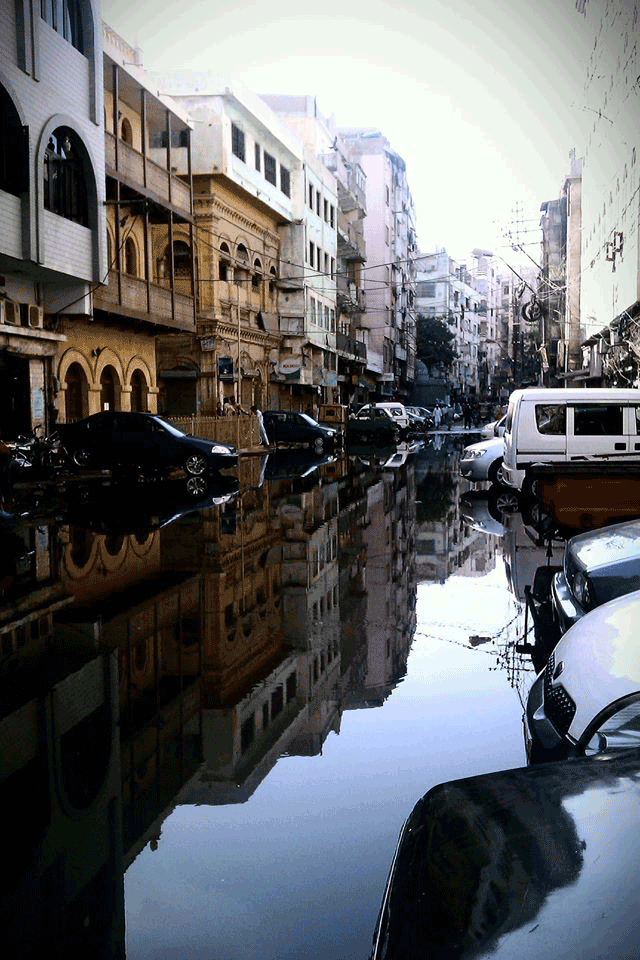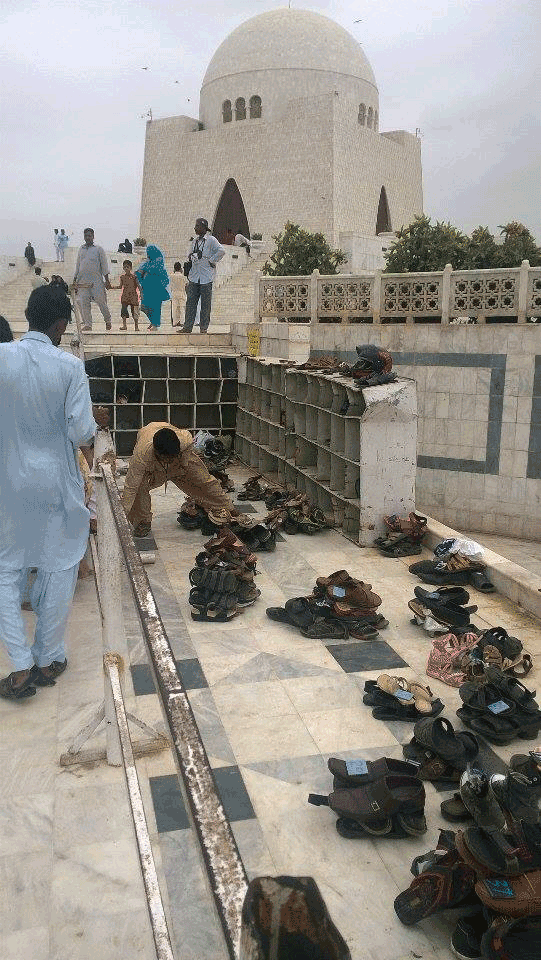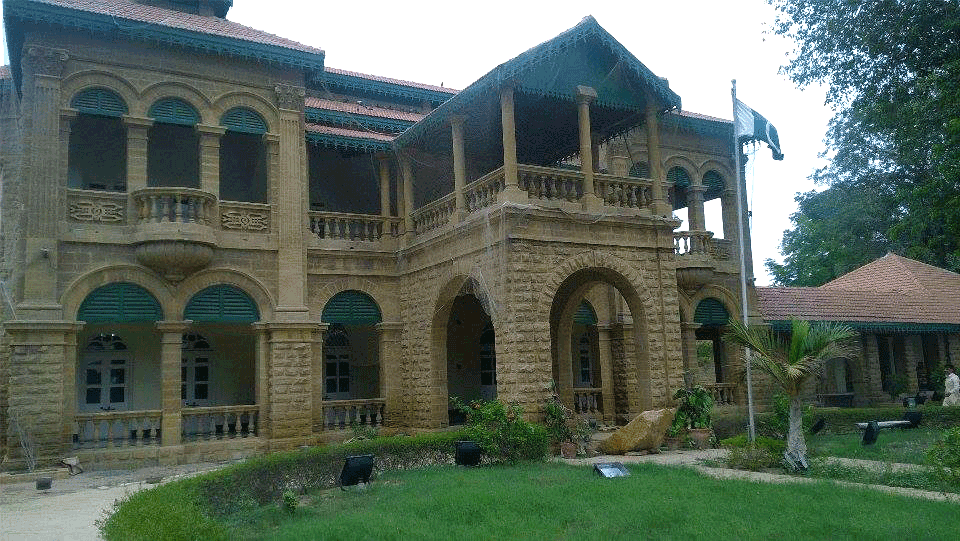Preserving Jinnah’s Legacy
By Ramsha Jahangir | Special Report | Published 8 years ago
Amidst the hustle and bustle of Karachi’s busy streets to the south of Saddar Town, stands a limestone structure that is more than a century old – The Quaid-e-Azam House or The Flagstaff House. Although the sight of the historic building with arched pillars, old trees and British architecture appeals to the visitor from a distance, as one walks closer, the picture changes. At the corner of the entrance, a tumbled noticeboard welcomes you, while the barren space that was once a lush green lawn is a barren expanse now.
The museum guide, Rasheed, walks visitors to the backyard of the Flagstaff house and holds forth on its architectural elements. “There are servant quarters and a barn which have been converted into a hall for guests. The flooring of the building has been renovated multiple times,” he shares. Currently, the flooring of the front portion of the house is being revamped on orders issued by Sharmila Faruqi, Minister for the Sindh Department of Culture, Tourism and Antiquities. ‘’Bus upar upar se kaam karwa toh rahay hain, jaise kay jaan churani ho — Quaid nay pura mulk bana dia, yeh ek ghar na sambhaal sake (They are just making a show of renovation- the Quaid gave them an entire country, they can’t even look after a single house),’’ he adds in dismay.
The second floor that leads to Fatima Jinnah’s room and the balcony is no longer accessible to visitors, since the base of the stairs and roof are crumbling away. ‘’I am extremely embarrassed when foreigners head this way. The government thinks that covering up the place with more plants can hide these faults, but one does not need a special eye to notice the obvious,’’ laughs Rasheed.
The residence has hosted several events in the past and holding an event there would cost around Rs. 50,000. However, due to increasing security concerns after an attack on the Ziarat residency, no recreational activities are allowed in the museum.
A recent report states that for the year 2016, the Sindh Culture Department has been allocated an amount of Rs. 2.01 million for a total of 66 schemes. However, despite the provision of funds and schemes allotted under the Annual Development Programme, projects such as the upliftment of The Quaid-e-Azam House Museum remain unapproved and there is zero financial progress for 2016-17. Alternatively, development projects by the city authority, including the construction of the Shaheed Benazir Bhutto flyover at Shaheen Complex, construction of a commercial and parking plaza at Shahabuddin Market Saddar and remodelling of the Baloch Colony bridge have been declared top priority projects for completion.
There has been a 39 percent increase in the allottment of funds compared to 2015. However, all the 66 schemes, of which 50 have been labeled ‘ongoing, ‘ are the same as last year’s with no new projects. For Karachi, projects such as the restoration of two vehicles of the Quaid’s sister, Fatima Jinnah, are yet to be completed and have been put on a target completion of 2017.
Wazir Mansion, located in the dense streets of Kharadar in Karachi, is the house where Mohammad Ali Jinnah spent 16 years of his childhood and youth. Standing solemnly on a street known as Chagla Street (now Barkati Street), the three-storey building belongs to the colonial period. In 2004, a project to restore Wazir Mansion’s glory was started by the department of archaeology and museums at an approved cost of Rs. 25.04 million. The project was completed in 2010.
Recently, the national monument made headlines in the media due to the heaps of garbage lying outside the museum, highlighting the laxity of the Department of Culture, Tourism and Antiquities in Sindh in preserving and maintaining sites of such significance. ‘’Aseefa Bhutto visited the mansion a few days back and that’s why the streets look comparatively cleaner, otherwise it is a disgrace for us local residents to walk here; showing respect for the birthplace of the father of the nation is out of the question for those in charge,’’ says Ajmal, a resident of Kharadar.
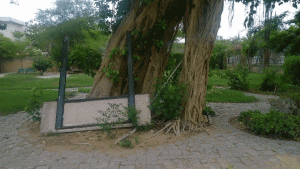 Various social movements have been initiated in recent times to reclaim public spaces such as the I
Various social movements have been initiated in recent times to reclaim public spaces such as the I 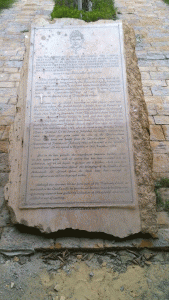 am Karachi project and Super Savari Express city tour, but due to their deplorable condition, Jinnah’s landmark houses fail to attract visitors.
am Karachi project and Super Savari Express city tour, but due to their deplorable condition, Jinnah’s landmark houses fail to attract visitors.
A report published in the The News states that out of the Rs. 10 billion allocated for old site projects in Karachi, the revamping of Wazir Mansion has been allotted Rs. 30 million. ‘’The Wazir Mansion was last renovated in 2011. It is due to media coverage in recent times that the Department of Antiquities has been forced to show interest after a lapse of five years,’’ says the caretaker of the Quaid’s birthplace.
The most discouraging factor is the absence of visitors and lack of initiatives to encourage locals to celebrate the presence of historical monuments, particularly those that link us to the father of the nation, Muhammad Ali Jinnah. Earlier, educational institutions had a custom of taking students to cultural sites to evoke a sense of inspiration, cultural nostalgia and patriotism, but that tradition is unfortunately fading away with time. Thus, until people follow Jinnah’s ideals of unity, faith and discipline, conserving his architectural legacy will not serve any purpose.
Despite the great turnout at the Quaid’s mausoleum, the site rarely hosts events to pay tribute to his memory. ‘‘We come here because it is cheap and a good place for a family picnic. My children have no particular interest in knowing about the Quaid,’’ says Khurram, father of four children while visiting the mazar.
The traces of the past are progressively vanishing into thin air in a country where culture happens to be the least of the government’s concerns. Sixty-nine years down the road of independence, Jinnah’s architectural legacy in Karachi is in grave danger of being lost to the coming generations.



